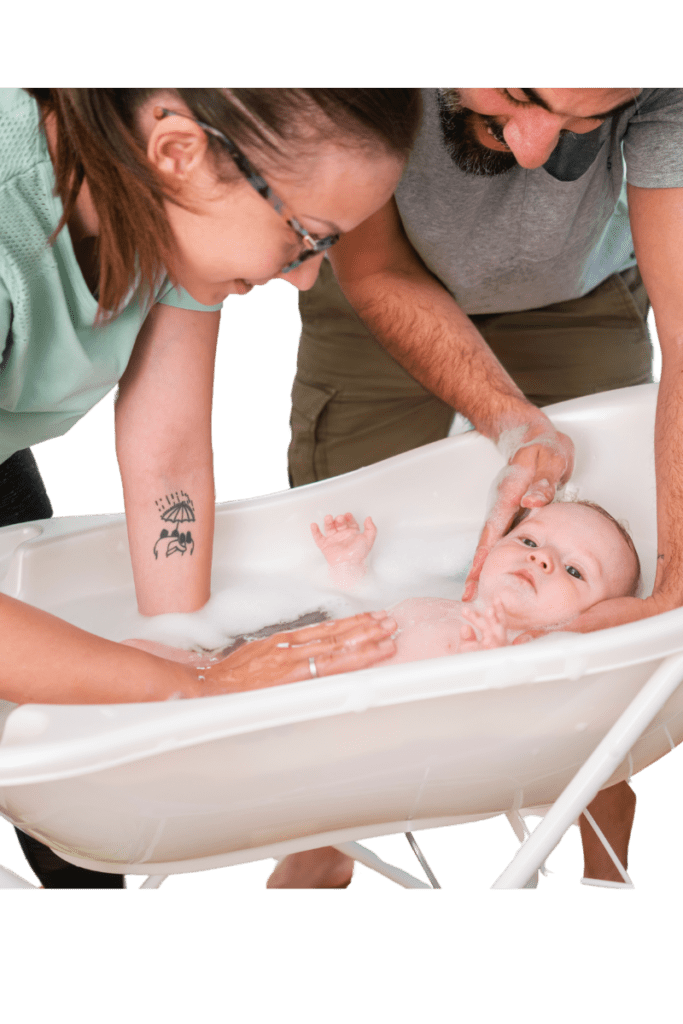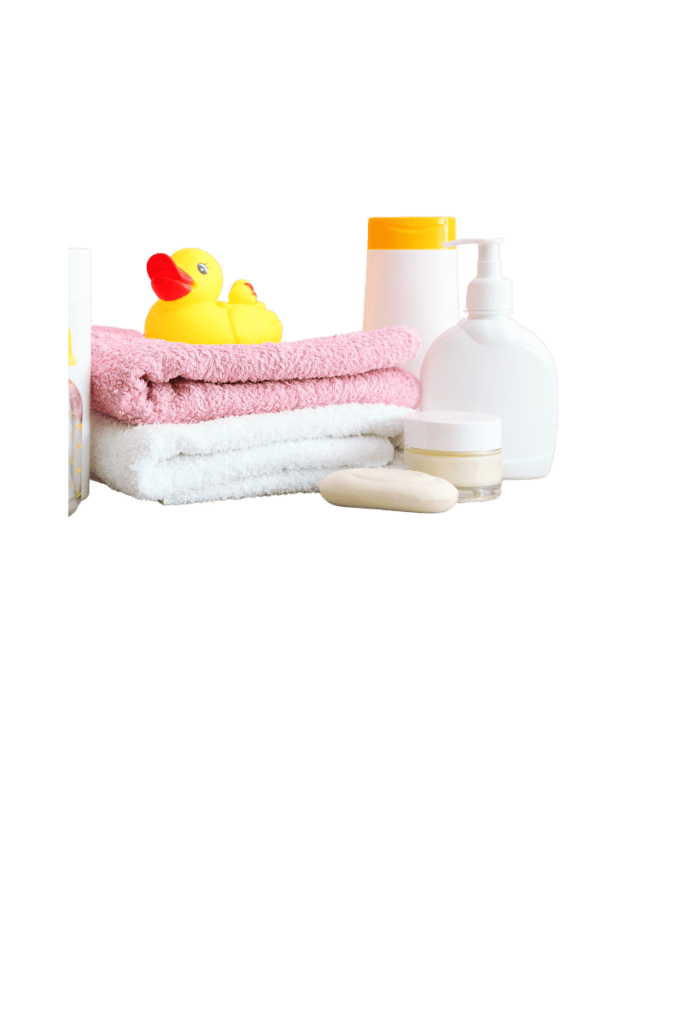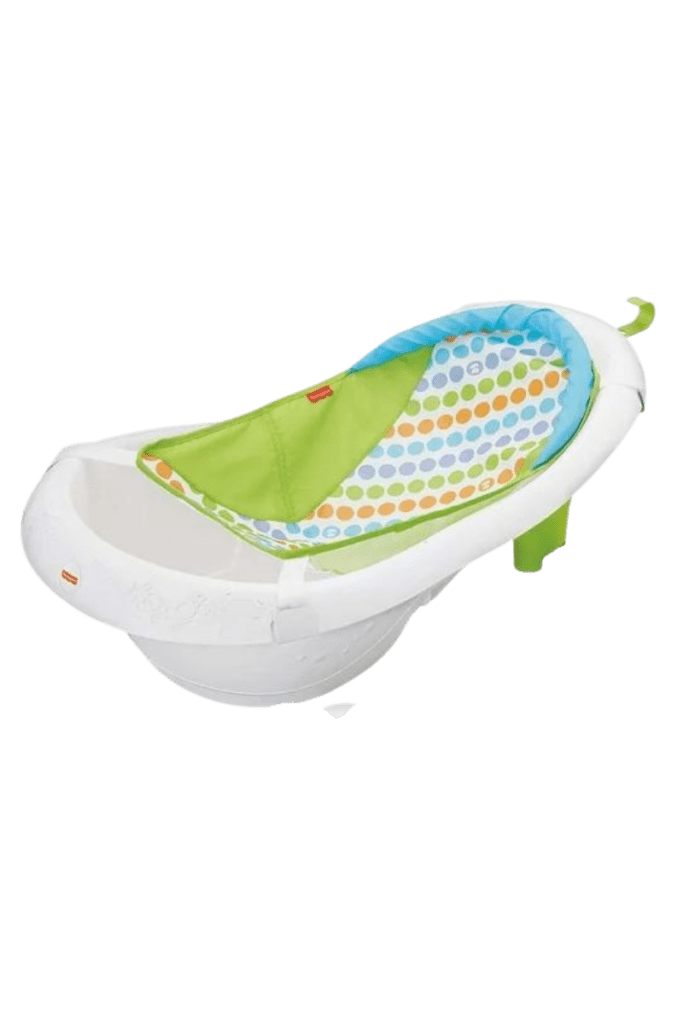
Bringing home your new baby is filled with milestones and firsts. One of them is bathing your newborn. Bathing a slippery-when-wet tiny human can be stressful when you first do it, but with a bit of practice, you will soon feel relaxed and confident, and the experience will be a loving, bonding experience for both of you.
The Very First Bath
Many hospitals no longer routinely give baby their first bath. This is in part because most babies no longer go to newborn nurseries. The advent of rooming in with your baby and recommendations from the World Health Organization have led to the baby’s first bath often being done after they leave the hospital. Studies show that delaying an infant’s first bath by at least 24 hours has many health benefits. You can ask the hospital staff to help you administer your baby’s first sponge bath before you leave. However, with hospital stays sometimes only 24 hours, waiting until you get home may be best.
What time of day you bathe your baby is entirely up to you. Many people incorporate bathing in their bedtime routine since many babies find a warm bath soothing.
Giving a Sponge Bath
Until the umbilical stump falls off, the American Academy of Pediatrics recommends that babies only be given a sponge bath.
When giving your baby a sponge bath, use the following suggestions to help it be a successful, happy experience.
- Choose a warm place with a flat surface.
Young babies struggle to regulate their body temperature. Keeping the bath space at 75-80 degrees fahrenheit will help ensure your baby stays warm and happy.
- Use a soft blanket or towel for your baby to lie on.
Cover any hard surface your baby will lay on with a warm blanket or towel. This will get wet.
- Keep one hand on your baby for safety.
Always keep at least one hand on your baby during bathing. Babies are very slippery when wet.
- Use a sink or shallow basin to hold the water.
Some people find using two basins, one for clean water for rinsing and one for soapy water works well.
- Make sure the water temperature is not too hot.
The American Academy of Pediatrics recommends turning the water heater to a maximum of 120 degrees to prevent scalding. A water temperature of 100 degrees is optimal.
- Gather your essential supplies.

These will include a washcloth (or two), a towel — preferably with a built-in hood —baby shampoo and soap, a clean diaper, and a change of clothes.
Bathe From the Head Down
Once the space is ready, undress your baby and wrap them in a towel. Lay your baby on the prepared space and only expose the parts of your baby’s body that you’re washing to help keep them warm.
Wet the washcloth with plain, warm water. Then, rinse out excess water and wipe your baby’s face. Wipe each eyelid from the inside to the outside corner. Using a cotton ball for the eyes may be helpful.
Use a dampened washcloth dipped in plain or soapy water to clean your baby’s body. If you use soap, make sure it’s mild and moisturizing. Pay special attention to creases under the arms, behind the ears, around the neck, and in the diaper area. Also, wash between your baby’s fingers and toes. It’s often easier to use your hands with soapy water to get all the creases and crevices.
Graduating to a Tub
Once your baby’s umbilical stump falls off, typically within a week or two, you can graduate bathing your newborn in a tub bath. There are many styles of infant tubs available for purchase. A few of our favorites are Angelcare Baby Bath Support, 4moms Cleanwater tub, and the fFisher-Price 4-in-1 Sling ‘n Seat Tub.

Fill the tub with warm water about 100 degrees. Use enough water to submerge your baby enough to feel warm but not too much so they get water in their face and mouth. You can also place a warm washcloth on your baby’s torso for added warmth.
Use your non-dominant arm to support your baby’s head and neck and the other to hold and guide your baby’s body into the water, feet first. Continue supporting your baby’s head and back as needed. You can reach behind your baby and hold on to their opposite arm throughout the bath.
Then, follow the same steps and process as with a sponge bath.
Now Offering First Bath Support

Because we understand that giving your tiny, wiggly human their first bath can be a bit overwhelming, we are now offering support for bathing your newborn. For more information about this service contact us here.

